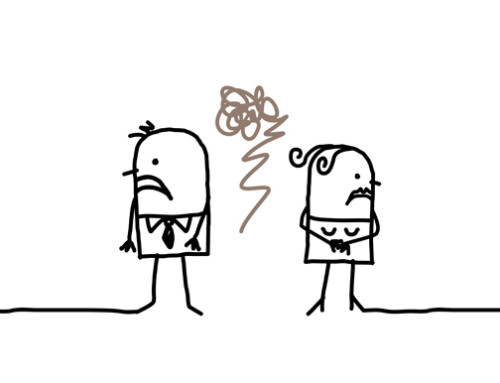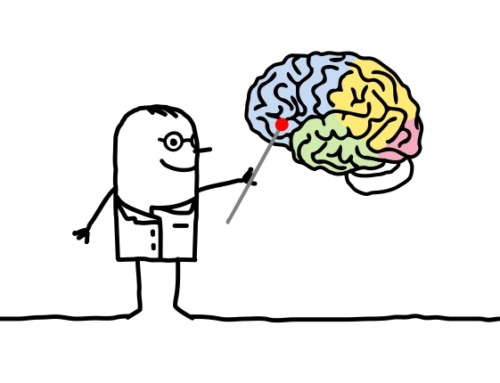In this article, I discuss how to use one part of your mind to connect with the present by managing another part of your mind.
Estimated reading time: 5 minutes.
In my last article, I discussed two parts of the mind—the observing self which we use when we focus on the present—and the thinking self which we use when we are focused on thoughts which enter our minds about past or future matters while we are doing something in the present. I also discussed how thoughts comprising the thinking self have the potential to detract from your ability to use the observing self to focus on the present.
In this article, I will discuss strategies which you can use to connect with the present by using your observing self despite the presence of thoughts coming from the thinking self. These strategies involve focusing on the present while managing thoughts coming from the thinking self. I will discuss these strategies in the following sections.
Normalize the thinking self
The first step in being able to focus on the present by using the observing self is to normalize the presence of the thinking self. That is, recognize that everyone has thoughts about the past or the future enter their minds while they are engaged in activities in the present.
If you accept that it is normal for you to have such thoughts from the thinking self, you are less likely to be bothered by their presence. By itself, this will make it easier for you to use your observing self to focus on and enjoy the present activity in which you are participating.
Accept rather than resist
Related to the previous strategy of normalizing thoughts from the thinking self is to accept them rather than resisting them. The phrase, ‘that which you resist persists’ speaks to the problem of trying not to think about thoughts which enter your mind. Having said that, it makes sense on the one hand to try not to think about thoughts from the thinking self so that you can instead focus on the present by using your observing self,
Unfortunately, trying not to think about thoughts coming from the thinking self only results in your thinking more about these thoughts. This is the phenomenon of thought suppression demonstrated in research studies in which participants were asked not to think about a white bear for a certain period. As you have likely surmised, participants in these studies reported thinking even more about a white bear following the instruction not to think about it.
In contrast, if you accept thoughts from your thinking self rather than trying not to think about them, then you are less likely to dwell on these thoughts and become ‘hooked’ into the them. In turn, this makes it easier for you to connect with the present despite the presence of these thoughts coming from the thinking self.
Return to focusing on the observing self
Once you notice and accept the thoughts which enter your mind from the thinking self, it is good to simply practice returning to focusing on the observing self. For example, if you are participating in an activity or having a conversation and notice a thought from the thinking self enter your mind which temporarily takes your focus off the activity or conversation, simply return to focusing on the activity or conversation.
With practice, you will realize that the thoughts from the thinking self can enter your mind without you getting hooked into them to the point that you are no longer able to focus on the present by using the observing self.

Use cognitive defusion
When the thoughts from the thinking self are negative ones which lead to emotions like anxiety, anger, frustration, sadness and guilt, cognitive defusion is a technique which makes it easier for you to focus on the present by using the observing self.
This technique helps you to recognize that having these thoughts does not mean that they necessarily reflect reality. The simplest way to use cognitive defusion is to say, ‘I’m having the thought that’ before reciting the thought in your mind.
By recognizing that these negative thoughts from the thinking self are not necessarily reflections of reality, it makes it easier to accept these thoughts and the emotions which stem from them. In turn, this makes it easier for you to return to focusing on the present by using the observing self.
Park the thoughts from the thinking self
When you park thoughts, you set a later time to deal with those thoughts later rather than dealing with them immediately. Parking is different from thought suppression in which you try not to think thoughts and have no plan to deal with them later.
Parking thoughts from the thinking self allows you to accept these thoughts rather than trying to suppress them. Knowing that you will be dealing the thoughts later makes it easier to return to focusing on the present by using the observing self.
For parking to be effective, you need to deal with those thoughts from the thinking self at the scheduled later time. How you deal with those thoughts from the observing self at the assigned time depends on the nature of those thoughts.
For example, if the thoughts from the thinking self concern a financial problem, you may want to work on addressing that problem at the assigned time. If the thoughts from the thinking self relate to an issue in a relationship which needs to be addressed, you may choose the assigned time to plan how you are going to discuss the issue with the person. If the thoughts from the thinking self are self-critical or worrisome thoughts, you could use the assigned time to do a thought record in which you can evaluate those thoughts with evidence in order to think in a more balanced way to reduce the intensity of the emotions stemming from those thoughts.
Use the ‘radio in the background’ metaphor
Use the metaphor discussed by Dr. Russ Harris in The Happiness Trap by viewing the thoughts from the thinking self as akin to a radio playing in the background while you are going about your daily tasks. You may notice the radio at times but you are able to return to focusing on your tasks while it plays.
In a similar manner, simply notice the ongoing ‘radio’ in your mind playing thoughts from the thinking self. Then just return to focusing on the present by using your observing self while the radio continues to play.
Using the techniques discussed in this article should help you to connect with the present moment and thereby appreciate the ‘power of now’.
May you use your observing self to connect with the present by managing your thinking self,
Dr. Pat






Leave A Comment